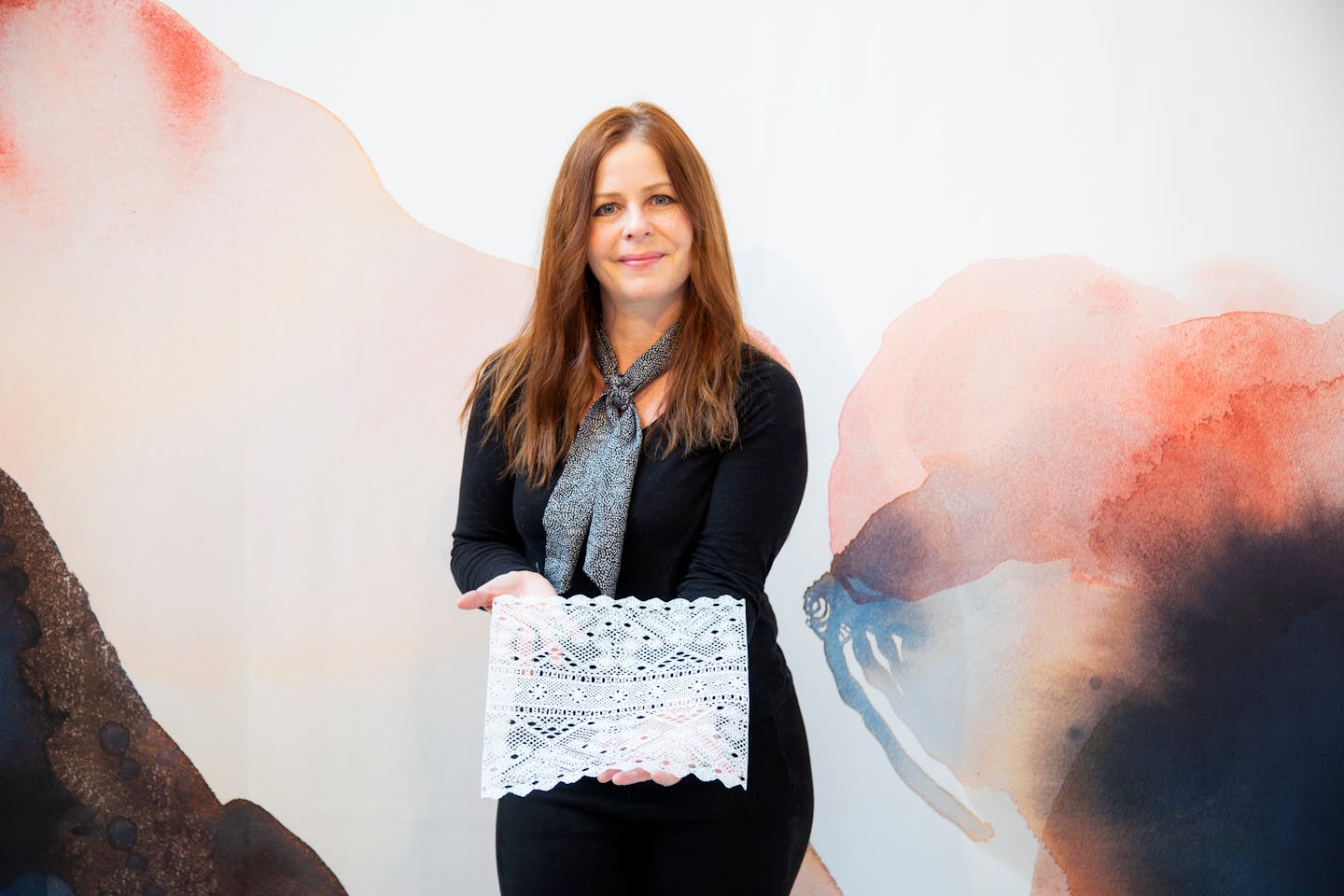When Swedish immigrant Carolyn Hjelmerus came to Minneapolis in 1889, she brought with her a bobbin lace sample book.
More than 130 years later, Minneapolis artist Amy Sands discovered excerpts from the book in the American Swedish Institute's online archives. Locked out of the museum by the pandemic, Sands continued investigating online and through Zoom sessions with ASI staff, who located the book and sent the artist a digital copy.
These and other assorted pandemic-induced twists and turns led to "Lace Reimagined," an exhibit now on display at the Swedish Institute. The Brainerd-born artist didn't actually see the real-life sample book — which is included in the show — until the day in February that she delivered her work to the museum.
"I felt connected to making this series during the pandemic," said Sands. "That isolation felt similar to the way women worked during those times, often only having a small sample as their guide, and no instruction or diagram."
Sands, who is of Norwegian and Swedish heritage, creates one-of-a-kind paper and digital prints. She also worked with the Minnesota Lace Society to collect more research on bobbin lace, also known as "pillow lace," which is created by braiding and twisting lengths of thread on bobbins.
"Lace Reimagined," displayed in the hallway connecting ASI's old Turnblad Mansion with its modern Nelson Cultural Center, includes seven digital engravings on acrylic, three papercut/serigraphs, and seven hand-colored serigraphs that utilize lace patterns.
Another large-scale piece hangs outside on the fence facing Park Avenue, bringing lace designs into a space where traditional lace could never exist.
In Sands' world, lace is no longer something to sew on a dress or pin to a tablecloth. It's another means of creating an aesthetic experience.
In her "Constellation" serigraphs, she repatterns and hand-colors lace-patterned cutouts, infusing them with bright colors, flowers, squares and abstractions. In this series, "Astra V" meshes tones of maroon, pink and orange, meeting in the middle with a blue square.
Her "Bobbin Lace" digital prints on clear acrylic further remove the material from its original context, creating new ways of looking at lace patterns. One piece hangs in front of a window, making ASI's courtyard part of the work. Depending on the time of day, visitors may see shadows from the lacework cast onto the hallway floor.
Sands' outdoor piece speaks most to the transformations she embraces. Three feet tall and 8 ½ feet long, it consists of three sheets of polystyrene cut into lace patterns. Depending on COVID restrictions in the future, the museum may project colorful lace patterns onto it at night, creating another visually dazzling experience.
Traditionally, lace is associated with domesticity and so-called "women's work" or craft. There are two main categories of lace — bobbin and needlelace — and it may have originated in late-15th-century Italy.
Certainly, it was used by clergy of the early Catholic church, but its contemporary use is not necessarily pious. Lace is worn at weddings and funerals, for ultra-girly pink bows or on a fetish lace mask. The modern-day use of lace, removed of its original context, embraces the spectrum of genders and sexuality, but remains rooted in a history of traditional femininity.
Sands is most interested in considering the meanings that lace takes on through this in-between space — of playing with what's considered craft, high art and low art, and unpacking that. She is curious about how the crafts have their own stories, and the communal ways women worked making lace as part of a social experience.
Some of the works are made using laser engraving, something far from the image of women knitting away in candlelit homes.
"I think some of the pieces have a meditative quality," Sands said. "I just like that others can bring their own experiences to that, and maybe be inspired by the patterns that they may not have noticed if they're on an article of clothing."
@AliciaEler • 612-673-4437
Lace Reimagined
When: 10 a.m.-8 p.m. Thu., 10-4 Fri.-Sun. through July 11.
Where: American Swedish Institute, 2600 Park Av. S., Mpls.
Admission: $6-$12, free for kids under 6. asimn.org.
Event: Artist Amy Sands will lead a virtual workshop on Nordic Handcraft, 11 a.m. June 5; $5 suggested donation.






